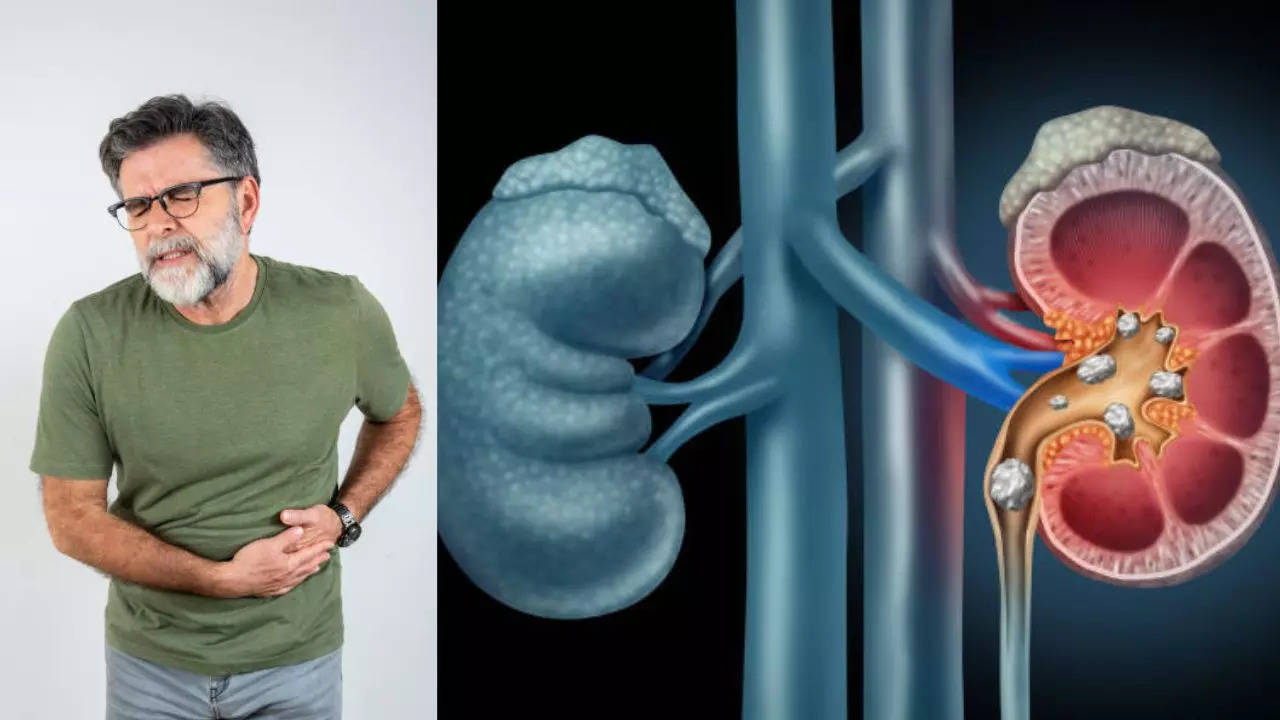Contents
-
news
-
Health
Why do cases of kidney stones increase in winter? Know ways to avoid pain and discomfort
Cold temperatures increase the risk of developing kidney stones – clusters of crystals that form from minerals and other substances in your urinary tract. Extremely painful and uncomfortable, these are mostly formed in winter due to high consumption of oxalates, low hydration and excess calcium in your urine. Read further to know ways to avoid this.

More people go to hospitals and clinics with severe pain – which is usually a sign that the stones are moving and this happens more often in winter.
Winter has officially begun and with temperatures dropping every day, the cold weather can take a toll on your health. According to experts, apart from taking care of other organs like your heart, you also need to pay special attention to your kidneys, which are prone to stone formation.
Kidney stones are often irregularly shaped formations made of minerals and acid salts that can become lodged in your ureters – the tube connecting your kidneys and bladder – and cause excruciating lower back pain and groin discomfort.
Why does the risk of stone formation increase in winter?
According to doctors, more people come to hospitals and clinics with severe pain, which is usually a sign that the stones are growing and this happens more frequently in the winter season than at any other time of the year.
But why is it so? Statistics say that about 80 percent of stones are primarily calcium based. According to studies, your body produces more calcium in your urine in the winter, and having too much calcium in your urine increases the chance of kidney stones.
Moreover, experts say that in winter, people increase their intake of many foods rich in oxalate or salt like spinach, which leads to the development of kidney stones. Kidney stones strike you just when you least expect it. Like you were planning to go to the park or toss a football in the yard.
Kidney stones vary in size
Doctors say kidney stones are extremely small – some are even 2 to 3 millimeters wide – but can block and constrict the ureter in an effort to squeeze the stone into the bladder. As the ureter of the kidney builds up pressure and dilates, it causes severe stinging discomfort in the lower back and/or groin and is often associated with nausea and vomiting.
Kidney stones vary in size – from as small as a grain of salt to as large as a golf ball – and affect all genders approximately equally. The smaller the stone, the more likely it is to pass through the urinary tract without medical treatment.
Symptoms and signs of kidney stones
The most common symptom of kidney stones is pain in your lower back, stomach or side, which may also extend from the waist to the armpits. This can be a mild pain or sharp and severe and is also called colicky pain because it can get worse in waves. Some other symptoms include:
- nausea and vomiting
- bloody urine
- pain while urinating
- inability to urinate
- feeling the urge to urinate every 10 minutes
- fever and chills
- cloudy or foul-smelling urine
How to treat and prevent kidney stones in winter?
According to doctors, if you have had kidney stones once, there is more than a 50 percent chance of developing another stone within the next five years. This risk generally increases as you age and so, while there is no way to completely prevent kidney stones, there are some things you can do to reduce your risk.
Some things you can do include:
- Eat more fruits and vegetables to make your urine less acidic
- Avoid too much salt and processed foods, which are high in sodium
- Drink plenty of fluids, including water, especially in winter when hydration levels go down rapidly. Experts recommend that anyone at risk for kidney stones should drink enough fluids to produce at least 2.5 liters of urine per day.
- Limit your intake of high oxalate foods like spinach, wheat bran, tree nuts and peanuts
- Eat more foods that are good sources of calcium.
Get the latest news live on Times Now with breaking news and top headlines from around the world.


